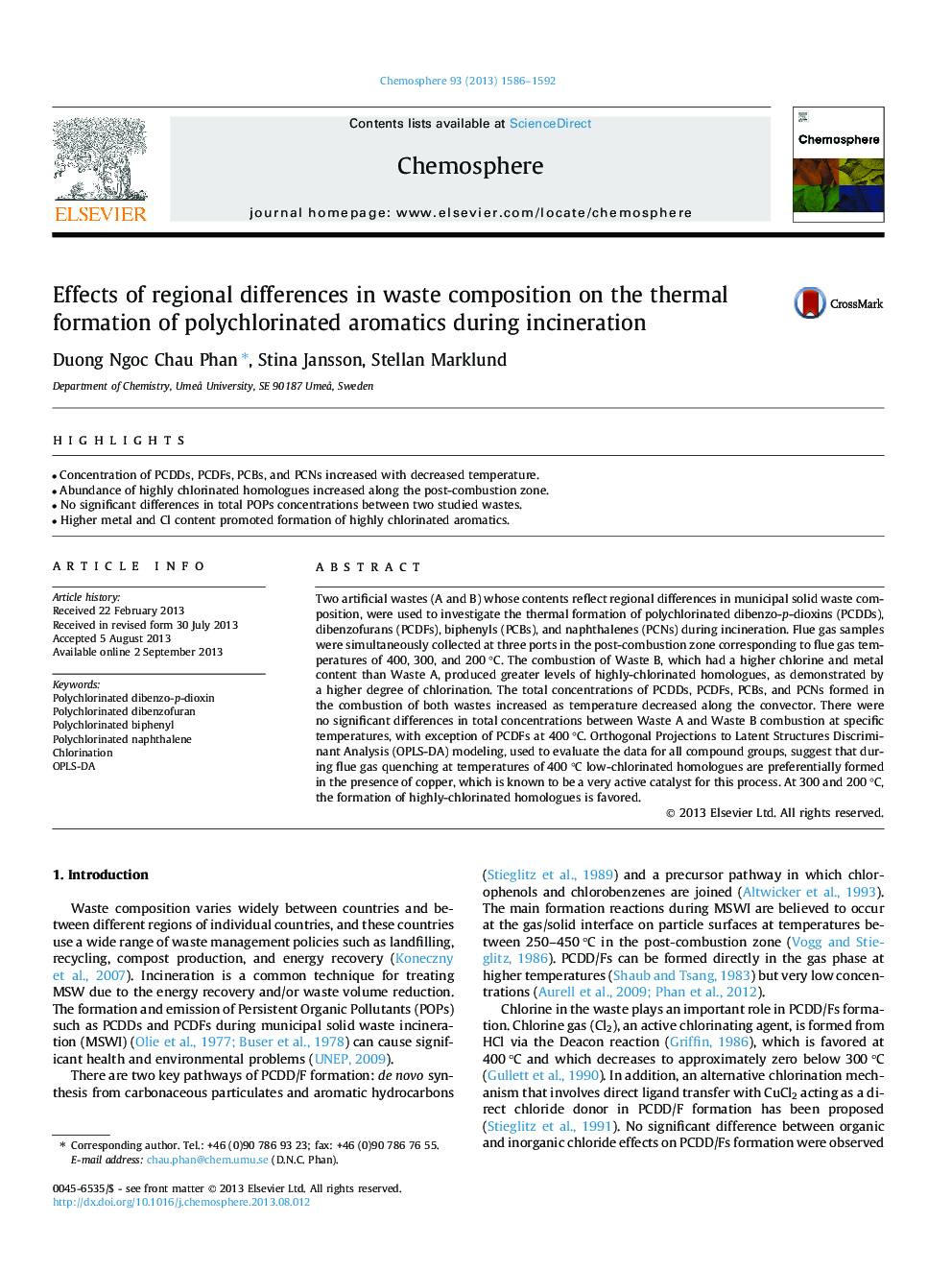| کد مقاله | کد نشریه | سال انتشار | مقاله انگلیسی | نسخه تمام متن |
|---|---|---|---|---|
| 4409057 | 1307461 | 2013 | 7 صفحه PDF | دانلود رایگان |

• Concentration of PCDDs, PCDFs, PCBs, and PCNs increased with decreased temperature.
• Abundance of highly chlorinated homologues increased along the post-combustion zone.
• No significant differences in total POPs concentrations between two studied wastes.
• Higher metal and Cl content promoted formation of highly chlorinated aromatics.
Two artificial wastes (A and B) whose contents reflect regional differences in municipal solid waste composition, were used to investigate the thermal formation of polychlorinated dibenzo-p-dioxins (PCDDs), dibenzofurans (PCDFs), biphenyls (PCBs), and naphthalenes (PCNs) during incineration. Flue gas samples were simultaneously collected at three ports in the post-combustion zone corresponding to flue gas temperatures of 400, 300, and 200 °C. The combustion of Waste B, which had a higher chlorine and metal content than Waste A, produced greater levels of highly-chlorinated homologues, as demonstrated by a higher degree of chlorination. The total concentrations of PCDDs, PCDFs, PCBs, and PCNs formed in the combustion of both wastes increased as temperature decreased along the convector. There were no significant differences in total concentrations between Waste A and Waste B combustion at specific temperatures, with exception of PCDFs at 400 °C. Orthogonal Projections to Latent Structures Discriminant Analysis (OPLS-DA) modeling, used to evaluate the data for all compound groups, suggest that during flue gas quenching at temperatures of 400 °C low-chlorinated homologues are preferentially formed in the presence of copper, which is known to be a very active catalyst for this process. At 300 and 200 °C, the formation of highly-chlorinated homologues is favored.
Journal: Chemosphere - Volume 93, Issue 8, November 2013, Pages 1586–1592